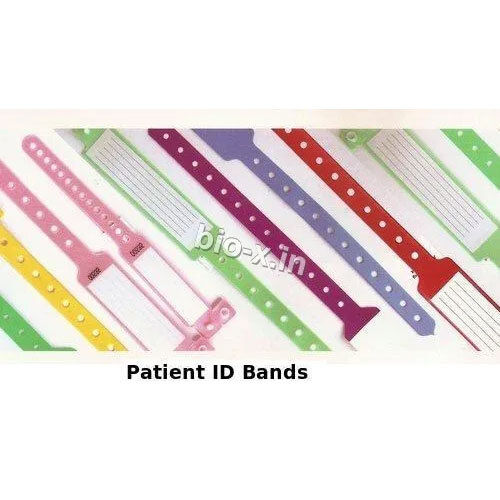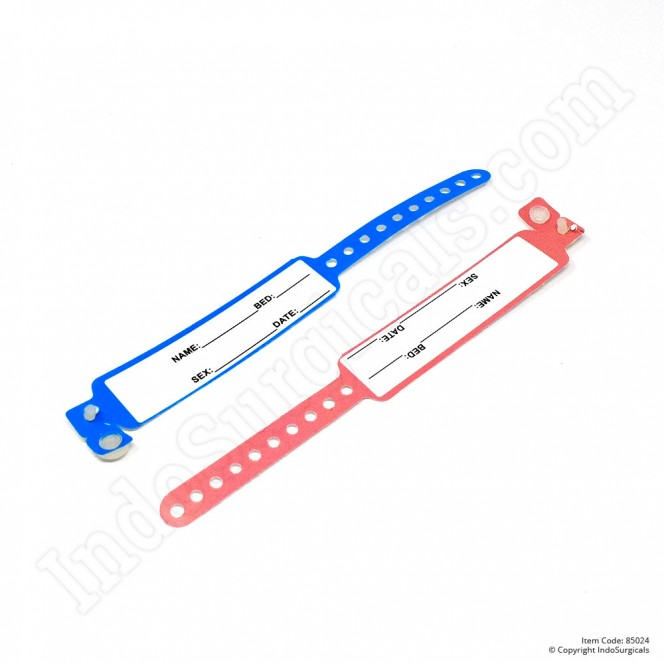The Significance of a Patient Identification Band in Improving Hospital Patient Tracking Systems
The Significance of a Patient Identification Band in Improving Hospital Patient Tracking Systems
Blog Article
Checking Out the Numerous Kinds of Patient Identification Band Utilized in Medical Facilities
In the complex world of healthcare, the critical function of Patient Identification bands frequently goes unnoticed. These bands, varying from simple paper wristbands to sophisticated RFID bands, develop the foundation of Patient safety methods, making certain accuracy in Patient Identification.
Understanding the Relevance of Patient Identification Bands
While they might feel like plain devices, Patient Identification bands play a vital duty in clinical facilities. These bands function as an essential tool for verifying Patient identity, preventing medical mistakes associated with misidentification. The bands usually present vital details such as the Patient's name, age, blood group, and any type of well-known allergic reactions. They permit healthcare experts to quickly access this essential info, thereby assisting in punctual and exact clinical therapy. Patient Identification bands likewise aid in enhancing management jobs, making sure precise record-keeping and billing. Despite their simpleness, these bands symbolize the principle of Patient safety, a foundation of top quality healthcare. Without them, the danger of clinical mistakes, and as a result, Patient damage, could substantially boost.
Typical Paper Wristbands: Their Use and Limitations
Standard paper wristbands have been a staple in Patient Identification across different clinical facilities. While their usage prevails, they harbor specific constraints that may affect their performance in Patient monitoring. This area will concentrate on the range of their application and the integral drawbacks connected with their use.
Paper Wristbands: Usage Extent
In the realm of Patient Identification, paper wristbands have long held a critical function. These bands are typically made use of in outpatient setups, where the Patient's stay is short-term. The wristbands include necessary details such as the Patient's name, day of birth, and a special Identification number. This straightforward, yet effective system, allows clinical professionals to swiftly and properly determine individuals, guaranteeing the right therapy is administered. Paper wristbands are also utilized in emergency situation scenarios, where rapid Identification is critical. Their usage reaches occasions like blood contribution drives and mass inoculation programs, further highlighting their adaptability. Regardless of innovations in technology, the humble paper wristband remains a cost-efficient and reputable service for Patient Identification in different medical care situations.
Limitations of Paper Wristbands
Regardless of their prevalent usage, paper wristbands are not without their drawbacks. Their physical toughness is just one of the substantial restrictions. Exposure to water, sweat, or misuse can render them unreadable or perhaps trigger them to break down. Furthermore, paper wristbands usually lack the technical capacities of even more modern choices, such as barcoding or RFID chips, restricting their functionality to just showing created information. The failure to update or modify the information on the wristband is one more drawback. If the details is handwritten, readability can be endangered, leading to possible misidentification. Paper wristbands can trigger discomfort or skin irritability to some patients, especially when put on for extended durations.
Barcoded Wristbands: Developments in Patient Identification
While Patient Identification has actually long been a critical facet of medical care, the introduction of barcoded wristbands indicates a significant leap forward. These bands utilize the simpleness of barcoding technology, permitting for Patient details to be promptly scanned and accessed. They improve the rate and precision of Patient Identification, reducing the danger of clinical errors connected to misidentification.
Superhigh Frequency Identification (RFID) Bands: a Step Towards Futuristic Medical Care
The advancement of Patient Identification bands has caused the appearance of Radio Frequency Identification (RFID) Bands (patient identification band). These innovative devices existing essential benefits for medical care centers, using a much more effective and highly advanced means of Patient Identification. The application of RFID in medical care is a significant action towards a much more advanced strategy to Patient administration and security
Comprehending RFID Bands

RFID Bands: Secret Benefits
Accepting a future where technology and medical care combine, radio frequency Identification bands webpage offer numerous key benefits. Primarily, these bands boost Patient safety by providing precise, rapid Identification, thus lowering clinical errors. RFID bands can keep a large amount of Patient information, including medical background and allergies, allowing personalized treatment. They also enhance management tasks, as the automated data access replaces hand-operated procedures, enhancing effectiveness and decreasing documentation. RFID bands use real-time tracking of clients, essential in high-risk environments such as surgical procedure or extensive treatment. Finally, these bands are immune and resilient to environmental aspects, making certain constant capability. Overall, RFID bands stand for a considerable advancement in Patient Identification technology, benefiting both people and doctor.
Executing RFID in Health Care
These bands offer a smooth way to track and recognize individuals, ensuring their safety and enhancing effectiveness in treatment procedures. RFID bands lower clinical errors by supplying exact Patient Identification, which is essential in preventing misdiagnosis or incorrect medication management. Thus, the implementation of RFID bands is a substantial action towards enhancing Patient security and healthcare distribution.

Color-Coded Wristbands: Aiding in Quick and Accurate Diagnosis
In the busy setting of a clinical facility, color-coded wristbands have emerged as important devices for swift and precise Identification of a person's medical condition. These wristbands, worn by clients, bring certain shades that represent different medical pop over to this web-site problems or conditions. For circumstances, red might suggest allergic reaction dangers, while yellow could indicate an autumn danger. This system is developed to supply prompt visual signs to doctor, improving Patient security and care top quality. In emergency situation situations, the usage of these wristbands enables quick decision-making. The performance of color-coded wristbands depends on the harmony of color interpretation throughout health care establishments, requiring common requirements for constant application.
Methods for Reliable Application and Monitoring of Patient ID Bands
Attaining optimum usage of Patient Identification bands requires a well-structured approach for their application and monitoring. Patient education and learning is additionally important; individuals need to understand the objective of the bands and the requirement for their continuous wear. It's important to have a back-up strategy in area, such as barcode scanning or biometrics, to make certain that Patient Identification is never endangered.
Final thought
Patient Identification bands are vital in clinical facilities to guarantee safety and security and precision. Typical paper, barcoded, RFID, and color-coded wristbands each hold unique advantages, ranging from cost-effectiveness to sophisticated data storage and instant medical signals. Reliable execution and management of these bands can considerably decrease clinical mistakes, boost efficiency, and improve overall Patient care. Hence, understanding and utilizing these Identification devices is vital for preserving high criteria in health care.
These bands, varying from easy paper wristbands to innovative RFID bands, develop the foundation of Patient security procedures, making sure precision in Patient Identification.The advancement of Patient Identification bands has actually brought concerning the appearance of Radio Regularity Identification (RFID) Bands. Generally, RFID bands represent a substantial development in Patient Identification innovation, profiting both people and health care providers.
RFID bands lower clinical mistakes by supplying exact Patient Identification, which is essential in avoiding misdiagnosis or incorrect medication management. Patient education is also important; patients need to comprehend the function of the bands and the demand for their consistent wear.
Report this page